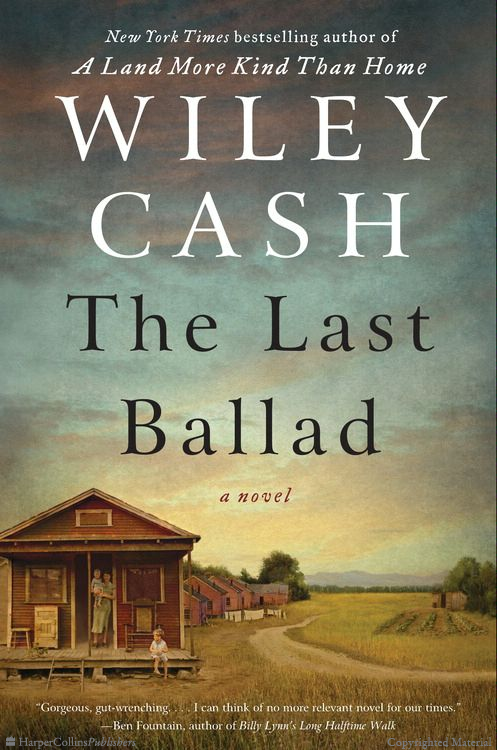The Last Ballad
The Last Ballad
by Wiley Cash (William Morrow, 2017)
Book Review by Jane LaTour. Jane is a freelance journalist and author of Sisters in the Brotherhoods: Working Women Organizing for Equality in New York City (Palsgrave Macmillan, 2008).
The Last Ballad, a novel by Wiley Cash, reimagines for readers the life of Ella May Wiggins, a name that entered the history books because she was killed by anti-union thugs in the 1929 Loray Mill strike in Gastonia, North Carolina. Back and forth, back and forth, like the looms in the mills that Ella May and her co-workers tended, the novel traces their working lives, 6 days and seventy-two hours a week, for a nine-dollar paycheck.
Cash begins Ella May’s story when she is called to the boss’s office. In a lyrical tour de force, he pictures her sitting on a bench, worrying about losing her job after missing a shift to stay at home to care for her sick child, the sole support of her four children, pregnant with a fifth, and the force of the machines vibrating through the walls, along with the deafening noise, the dirt and the lint (mill workers were referred to by the demeaning term “lint heads”) brings us into the dismal reality of a day in the mill.
The author weaves fact and fiction together, as figures from history join fictional characters in this portrait of the strike by the National Textile Workers Union (NTWU), and the conditions that drove the workers to take such a dangerous step; the mill villages, with their muddy roads and rotting shacks, and the lives the mill hands lead, with their subsistence diets, shoeless, diseased children, the long walks to work and back home again, in the dark. Then there is the always looming possibility of an “accident” on these dangerous jobs – lost fingers being a common occurrence, and the ever-present hunger, where a Moon Pie gets divided into four pieces – a sweet treat for Ella May’s four small children.
He portrays the on-going struggle for survival and the ever-present racial hatreds and divisions that hobbled the working class in the South, preventing impoverished, exploited black and white workers from making common cause against their common oppressors – the mill owners, the politicians and other members of the elite – the ruling class that looked down upon those who created their wealth in the mills as less than human, all are delineated.
We see Ella May Wiggins – a wife, mother, mill hand, singer, songwriter, and woman of uncommon courage amid the contours of her life – her joys, her fears and worries, her strength, and her decision to join in the fight against injustice, all against daunting odds. Cash, in clear, compelling prose, tells the story, and connects the past to the present through a clever narrative device. The author includes a bibliography at the conclusion, along with acknowledgments and an explanation of how he came to write this novel that restores Ella May to a recognizable woman – one who is now brought to life in the pages of this book, and, as we learn, finally had a memorial in North Carolina dedicated to her legacy as a true champion of the working poor.

